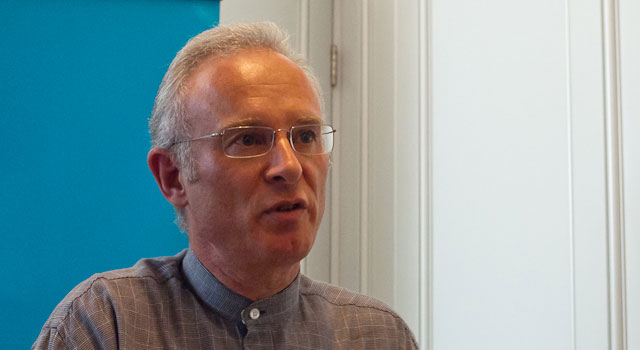
While many emerging markets have seen sales of dual-Sim mobile phones flourishing, giving device manufacturers like China’s ZTE and Huawei the chance to gain a foothold with innovative new devices, the market for dual Sims in SA remains negligible.
The operators are often blamed for failing to offer dual-Sim devices on their networks, fearing that consumers will route their calls over the cheapest network at any given time, but it appears a lack of demand may be playing a larger role for the lack of take-up.
Nokia makes 10 devices in its Symbian-powered Asha range, of which four are dual-Sim. None of the dual-Sim Ashas — the 200, 202, 302 and 305 — has been launched in SA, despite having been available in East Africa for more than a year and reportedly proving successful there. Nokia SA communications head Leo McKay says the Finnish device manufacturer has a “massive presence in East Africa with dual-Sim”.
“The dynamics there are very different in terms of price points and smartphone penetration,” McKay says. “They may be close [to SA] geographically, but they’re very different markets.” McKay says Nokia doesn’t bring dual-Sim products into the SA market at all, at least for now. “Operators know the consumer and the demand best,” he says. “We have a consultative process with operators. If there is demand for a product, operators will request it from us.”
According to McKay, dual-Sim devices are available in different forms, some of which require users to reboot the device each time they switch network; others, which offer something called “dual standby”, allow consumers to use both Sims at the same time. “Many East Africans do lots of cross-border travel, and [dual-Sim devices] are convenient for that,” says McKay.
He says that sort of travel is less common in SA and that those who do travel frequently often use high-end devices. Liza de Wet, marketing director for Huawei devices in SA, says operators have been reluctant to carry dual-Sim phones because there is “no real demand”.
De Wet thinks this may change when the feature is added to higher-end devices. She says Huawei has offered two dual-Sim models through retail outlets in SA but that “uptake was minimal”. The main attempt, the low-cost Qwerty keyboard-based G6005, was made available through Pep Stores and MTN for less than R400, but De Wet says sales were poor.
“It didn’t take off like we expected it to,” she says. “The market dynamics in SA are different to rest of Africa. What’s going on in East Africa is not necessarily the same here. There are concerns from some users about ease of use, and people remain worried about incurring data expenses and how they can manage them.”
Zunaid Dinath, Vodacom’s managing executive for the consumer market, echoes De Wet’s sentiments, saying dual-Sim devices are more popular in other emerging markets. “In SA, the market uptake has been slow due to the fact that these handsets have fewer features and are more expensive,” he says. “Should the market demand increase, we’ll definitely look at adding these to our range of handsets.”
Cell C says it offers only one dual-Sim phone for now, the Samsung E2222 Texto Dual, but the operator is looking to introduce more dual-Sim handsets in the coming months, according to a company spokesman.
“Prepaid customers, in particular, have become very price savvy and carry multiple Sim cards in their pocket,” Cell C says. “They change Sim cards constantly to take advantage of the benefits offered by mobile operators on certain days or during certain times.
“Having a Cell C Sim permanently slotted into a handset will provide us, as the challenger brand, with an opportunity to expose customers to our competitive … rates, which will hopefully encourage them to make Cell C their primary Sim.”

Arthur Goldstuck, MD of research firm World Wide Worx, says a report his company recently completed on local mobile phone use shows that, contrary to expectations, only 10% of SA consumers have more than one Sim card.
“There’s a perception in the market that because our Sim-card penetration is more than 100% that every second person has more than one Sim,” he says. “But there’s massive growth in active Sims for telemetry — from trackers to gate controllers and asset tracking.”
Goldstuck says another reason dual-Sim devices may not be proving popular in SA is that the country’s consumers are not as price sensitive as other markets. “Small shifts in pricing have less impact than in other markets,” he says. “The cost-saving benefit of multiple Sims is not as well recognised in SA as in other markets. It appears that complexity is outweighing the cost benefit.”
Historically, local operators weren’t keen to promote the idea of multiple Sims in devices, according to Goldstuck. He says they weren’t likely to make a great effort to educate the public on the benefits of dual-Sim because they didn’t want to encourage consumers to give their business, even if only some of it, to rivals.
He adds that companies like Samsung are introducing their own dual-Sim devices geared to developing markets. “Those devices will have huge traction across Africa. Samsung sees the significance of Africa as a growth market. This sets it apart from its nemesis, Apple, which is ignoring the developing world entirely because its devices are just too expensive.” Even African manufacturers like Mi-Fone have had great success with their dual-Sim offerings in West Africa, according to Goldstuck. — (c) 2012 NewsCentral Media




